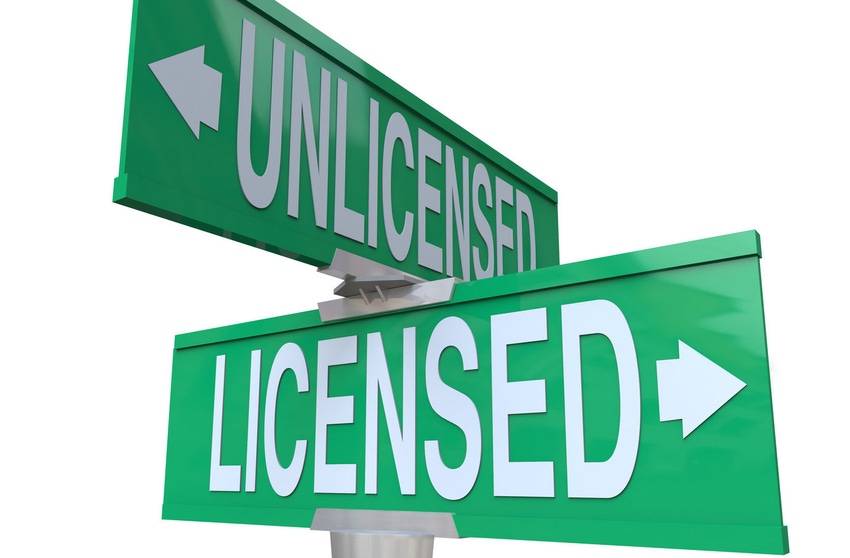Unlicensed spectrum has the potential to open up additional capacity for networks to support the licensed bands which are currently used to deliver LTE, and are increasingly creaking under the strain of data hungry users.
September 7, 2015

Telecoms.com periodically invites expert third parties to share their views on the industry’s most pressing issues. In this post Dave Wright of Ruckus Wireless, explains the benefits of LTE and Wi-Fi Link Aggregation as a method of harnessing unlicensed spectrum for mobile.
The use of unlicensed spectrum for LTE services is rightly triggering much debate in the telecoms industry. Long Term Evolution Unlicensed (LTE-U) and latterly Licence Assisted Access LTE (LAA) have come to define what is considered by some as an attractive resource, using unlicensed 5GHz radio bands to deliver LTE. Unlicensed spectrum has the potential to open up additional capacity for networks to support the licensed bands which are currently used to deliver LTE, and are increasingly creaking under the strain of data hungry users.
Unlicensed spectrum is also well-suited to indoor deployments, which is a key market for mobile operators as ~80% of wireless data is consumed indoors. However, under current industry standards relating to LTE-U and LAA, operators risk running into problems as unlicensed LTE and Wi-Fi signals battle for position in the same frequency bands. LTE and Wi-Fi Link Aggregation (LWA) is a more palatable way to bring LTE and Wi-Fi together – by utilizing Wi-Fi to carry LTE traffic.
LTE-U has been the talk of the industry since the concept was first introduced in 2013. Mobile operators spend hundreds of millions buying licensed spectrum, so the idea of moving their 4G users onto free, unlicensed spectrum is very attractive. However, LTE-U is causing contention in the industry because Wi-Fi also operates in the unlicensed bands and as we all know, there’s rather a lot of it around.
LTE assumes it has full control over the frequency bands it operates in. This means it can be a rather tricky neighbour to other radio technologies, not least Wi-Fi. Because Wi-Fi knows that is must share the unlicensed frequency bands, it is far more ‘polite’ and observes a contention based, first-come-first-served access model, which enables other radio technologies like Bluetooth and ZigBee to operate alongside it.
Additionally, Wi-Fi runs a Listen-Before-Talk (LBT) protocol where Wi-Fi stations sense the airwaves for activity before transmitting, and also use cooperative reconciliation mechanisms when collisions do occur. This means it excels in high capacity environments such as stadiums and schools, which is also where operators are keen to tap into the unlicensed bands to send LTE signals. Getting the two to play nice is where the problems lie.
Operators in countries such as the US and China could deploy LTE-U as their regulatory bodies do not stipulate a need for LBT. For those countries that do, License Assisted Access LTE (LAA) is a possibility as it supports LBT mechanisms. It’s a 3GPP-standardized version of LTE-U but it could still impede existing Wi-Fi infrastructures as it requires LTE and Wi-Fi to compete for access to the unlicensed spectrum. It is unsurprising therefore that many bodies within the Wi-Fi industry have major concerns about LTE-U, and would like to know more about the specific LAA LBT implementation.
An alternative proposal to bring LTE and Wi-Fi together simultaneously and utilize the unlicensed spectrum for LTE services is LTE and Wi-Fi Link Aggregation (LWA). Unlike LTE-U and LAA, it does not introduce a new unlicensed protocol that requires LBT mechanisms, but rather uses the current, proven Wi-Fi protocols and coexistence mechanisms to carry LTE information.
The clever innovation of LWA is that it makes LTE traffic look like Wi-Fi to another network – Wi-Fi signals smuggling precious LTE packets over the unlicensed airwaves. This serves to eliminate the LTE/Wi-Fi coexistence problems associated with LTE-U and LAA as unlicensed LTE and Wi-Fi no longer have to fight for access to certain frequency bands. It is only Wi-Fi running in the unlicensed bands, while the two technologies are still being combined to offer exceptionally fast data speeds.
LAA would require operators to deploy all new hardware, often at a substantial expense, and also wait for smartphone and tablet technology to evolve to comply with the required standards. Not so with LWA, which could be enabled with a straightforward software upgrade allowing smartphones to simultaneously receive LTE and Wi-Fi signals, both carrying LTE data, and combine them. Existing Wi-Fi APs also have the ability to continue to carry regular Wi-Fi traffic, therefore supporting all manner of users as operators and venue owners ride the transition to the new standard. Also of note, the Wi-Fi APs could be operated by a partner, such as a cable operator or other Wi-Fi provider, making LWA more broadly applicable.
Operators not only solve a capacity problem by disguising LTE signals as Wi-Fi to other networks, but combine the two great radio technologies, allowing them to operate in the conditions that suit them best. In this way, LWA is the unlicensed band solution for LTE that doesn’t actually impact the unlicensed band, using existing Wi-Fi APs while improving cellular performance to best service the demands of the modern day smartphone user.
 Dave Wright is Advanced Technologist at Ruckus Wireless.
Dave Wright is Advanced Technologist at Ruckus Wireless.
Read more about:
DiscussionAbout the Author(s)
You May Also Like








.png?width=300&auto=webp&quality=80&disable=upscale)


_1.jpg?width=300&auto=webp&quality=80&disable=upscale)


.png?width=800&auto=webp&quality=80&disable=upscale)